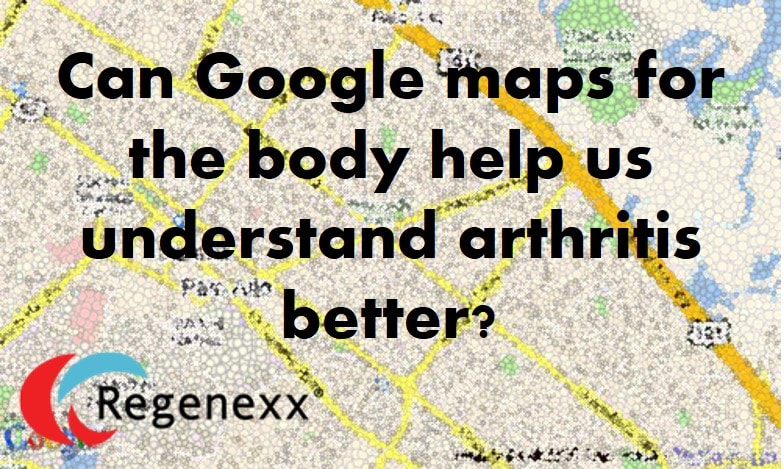Google Maps for the Body Helps Probe the Mysteries of Arthritis
Surgery is not new. It has been performed for thousands of years as the emergence of cutting tools also brought about the concept that opening the body to remove “the problem” made sense. But can Google maps improve the concept?
Interestingly, in earlier modern times, surgery was really reserved for emergency situations like appendicitis, and failed labors and catastrophic accidents in hopes of piecing people back together. But as is the human tendency it seems, the concept of more is better took over and things like scheduled C-sections and routine tonsilectomies became the norm.
More recently, the invention of arthroscopic surgery hit like wildfire. The concept of being able to go in and remove things without large incisions and all of the potential complications of major surgery was revolutionary…and ultimately dangerous, as way too much of it has been done simply because it could be. So, for example, instead of trying all conservative measures first, millions of people have had pieces of their meniscus surgically removed, creating bigger problems rather than solving the original one.
Enter Google. Google is either the best thing since sliced bread, or the most annoying thing since sliced bread depending on what you do, but there is no question that they are both incredibly powerful and incredibly innovative. Google has recently applied their Google Maps technology, combined with imaging technology developed by the German optical lens giant Ziess originally designed to scan silicon wafers for defects, to scan the human body. This technology along with MRI is currently being used by a UNSW Professor using semiconductor technology and Google algorithims to zoom in and out from a whole joint to the cellular level just as you would with Google Maps, to study osteoarthritis. The team’s intention is to look at the cellular communication (molecular transport) between blood cells, muscle cells, bone cells and cartilage cells. More importantly, the ability to see what happens to cells as the whole joint moves and bears weight could be revolutionary in our understanding of how to maximize outcomes with regenerative medicine. In addition, having the information handling technology to easily manipulate and analyze huge data sets to find the proverbial scientific needle in the haystack is a game changer.
The upshot? To be able to “watch” what’s happening from the whole joint down to a cellular level through “Google Maps for the Body” type technology is an exciting thing which will open up a new mainstream understanding of what is actually going on inside a joint and which I trust will ultimately, drastically cut down on unnecessary surgery!

If you have questions or comments about this blog post, please email us at [email protected]
NOTE: This blog post provides general information to help the reader better understand regenerative medicine, musculoskeletal health, and related subjects. All content provided in this blog, website, or any linked materials, including text, graphics, images, patient profiles, outcomes, and information, are not intended and should not be considered or used as a substitute for medical advice, diagnosis, or treatment. Please always consult with a professional and certified healthcare provider to discuss if a treatment is right for you.
